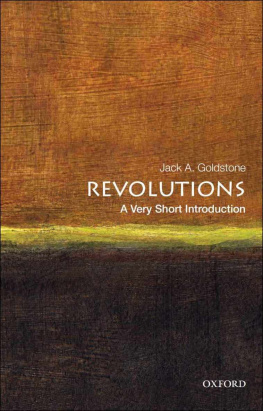Preface
In 1907 skilled bomb maker and revolutionary Stepan Zorian (18671919)known to his comrades as Rostomsat with Iranian constitutionalist leaders and consented to place the Armenian Revolutionary Federation, which was the leading Armenian party at the turn of the twentieth century, at the service of the Iranian Constitutional Revolution. Soon after the meeting, they took up arms together against royalists who were trying to halt the progress of the constitutionalist struggle. Two years earlier, during the Russian Revolution, Rostom had been far from the Iranian scene, stirring things up in the South Caucasus, where he convinced his party comrades of the importance of including the South Caucasus in their revolutionary struggle. Four years later, Rostom turned up again, this time in the Ottoman Empire after his partys involvement in the reinstatement of constitution and revolution.
Rostoms geographic mobility, his appearance at pivotal moments in three different revolutionary struggles, and his remarkable ease when operating in varied milieus point to a fascinating but heretofore unexamined and central feature of these modern revolutions: the critical circulation of revolutionaries as well as ideas, arms, and print. Rostom was one among many roving revolutionaries who made their way through these early twentieth-century revolutions and whose itinerant global ideas about constitutionalism, federalism, and socialism traveled with them and were appropriated according to local and regional circumstances.
These roving revolutionaries are at the core of this book. The book situates the revolutions and the movements of revolutionaries through them in a global context that focuses on the unprecedented technological transformations in transportation (steamship and railways) and communication (telegraph and print) that help reveal the circulation of not only revolutionaries but also weapons, print, and prevalent ideologies. My study takes a connected histories approach by highlighting circulation and mobility through the struggles in three empires to show the way in which the revolutions were connected by these transimperial crossings. The fervent idealism of revolutionaries as they made their ideological and physical journeys through revolutions takes on particular relevance in todays world of ever-increasing globalization, transnational movements, and communications, especially in light of their role in connecting the Arab uprisings that began in 2011.
The rising interest of world historians in tracking individuals across borders as a way of writing global, transnational, and connected histories makes this study especially timely, as it speaks to the larger concerns of the world history movement and, I hope, will inspire similar studies in other revolutionary periods. The story I tell in this book is a story of connected revolutionsa story of peoples and ideas in upheaval and in collaboration with each other, a story of revolution as a concept and revolutions on the ground and the promise they held for imperial subjects. This story spans three empires and brings to the fore historical processes and actors through a conceptual approach to historical writing informed by world history and connected histories.
My fascination with these revolutionaries dates back to my first book, which, although focused more closely on Armenians and the Iranian Constitutional Revolution, nevertheless indirectly addressed connections and crossings in the triangulated frontier empires of the Russians, Ottomans, and Iranians. I continued to develop my interest in early twentieth-century revolutions and revolutionaries and delved into world history in my teaching. Starting in 2008, I began having conversations with my partner, Sebouh Aslanian, in which he introduced me to the possibilities of connected histories, especially in relationship to the history and historiography of Armenians. Thanks to my participation in 2008 in a conference on the centenary of the 1908 revolution in the Ottoman Empire, I put my preliminary thoughts on paper and became energized by the prospect of connecting revolutions, revolutionaries, and histories. The graduate seminar I taught on comparative revolutions in 2012 and the animated discussions we had in that seminar served to cement in my mind the necessity of a connected histories study on revolutions, and I am more convinced than ever that expanding our lens to explore larger regional and global contexts opens up multiple worlds of richness, possibilities, and interconnections. This book is a product of my deepening commitment to excavating and examining the myriad connections and the meaningful ways in which those connections shape lives and histories, ties that may seem invisible at first, until we look closely and realize how ubiquitous and powerful they are. Through the book, I hope to make interventions in various fields, from global historyespecially comparative and connected revolutionsto the narrower fin de sicle Russian, Ottoman, and Iranian imperial worlds and the closely bound Armenian history. In a modest way, this book also aims to bring world history to the Armenians and Armenians to world history.
Acknowledgments
This book is the product of multiple circles of assistance and support, of relationships and friendships with loved ones, friends, colleagues, and professionals. Their influence has often taken place behind the scenes in both minor and extensive ways related to my process of thinking, researching, writing, revising, or taking a break from all of that. They have my deepest gratitude, and thanking them is a joyful pause at the end of this long journey. If I forget to acknowledge some individuals, it is neither from a lack of appreciation nor a lack of trying to remember all acts of help, small and large; I hope that anyone I may have overlooked will be forgiving.











